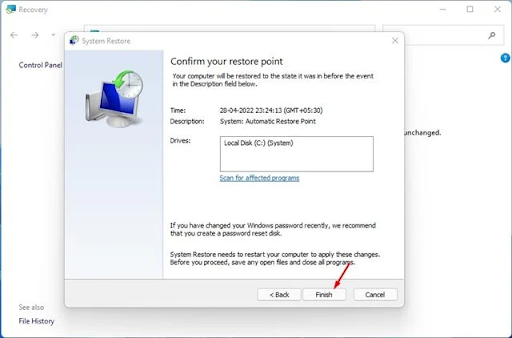How to Fix Corrupted Windows 11 System Files (Top 5 Methods)
Although Windows 11 has introduced a new design and a wide range of new features, it still faces many issues that force users to undo or install an older version of Windows.
Windows 11 is still being tested, and it has many bugs and glitches. With many bugs, glitches, and application compatibility issues, Windows 11 is prone to corruption of system files.
If your Windows 11 system files are corrupted for any reason, you will encounter some issues such as BSOD, system crash, file explorer lag, and more.
Top 5 Ways to Fix Corrupted Windows 11 System Files
So, if you are dealing with such issues and feel that your Windows 11 system files are corrupted, you may find this guide very useful. This article will show the best ways to repair or replace corrupted system files in Windows 11.
1) Run the SFC command in Windows 11
SFC or System File Checker is a utility for Windows that scans and repairs corrupted system files. To repair corrupted system files, you can run the SFC command on each version of Windows. Here's how to run the SFC command in Windows 11 to recover corrupted files.
1. First, open Windows 11 search and type command prompt . Next, right-click on Command Prompt and select Run as administrator.
Run as administrator
2. In the Command Prompt utility, type sfc /scannow and press the Enter button.
sfc / scannow
3. This will launch the SFC utility on Windows 11. The process will take a few minutes to complete. Once done, you will see one of the following messages. Here's what each message means.
Windows Resource Protection found no integrity violations.
If you see this message, it means that your Windows 11 operating system is in good condition, and there are no corrupted files in your system.
Windows Resource Protection could not perform the requested operation.
If you see this message, it means that the SFC command has failed to run the scan. Thus, you need to boot Windows 11 in safe mode and follow the same steps.
Windows Resource Protection has found and repaired corrupted files successfully.
If the command prompt utility shows you this message, it means that SFC has repaired the corrupted system files.
Windows Resource Protection found corrupted files but was unable to repair some of them.
If you see this message, the SFC command has found corrupted system files but failed to replace them. In this case, you need to follow other methods to repair corrupted system files.
2) Run the DISM command
If the SFC utility fails to repair corrupted system files, you need to run the DISM command. DISM, or image publishing and management service, is a command-line utility developed for administrators to troubleshoot specific problems on a computer.
It can quickly repair corrupted system files, corrupted system image files, etc. Here's how to run the DISM command in Windows 11.
1. First, open Windows 11 search and type command prompt . Next, right-click on Command Prompt and select Run as administrator.
Run as administrator
2. In the Command Prompt utility, execute the common command below and press the Enter button.
DISM /Online /Cleanup-Image /RestoreHealth
DISM / Online / Image Cleanup / RestoreHealth
Is that him! It's done. The DISM utility will attempt to find and repair the corrupted files in your Windows 11 computer. The process may take a few minutes to complete.
3) Run startup repair
If you are having problems with starting Windows on Windows 11, you need to run startup repair. This method will fix all the corrupted files that create problems with starting Windows 11. That's what you need to do.
1. First, click the Power menu in Windows 11, hold down the Shift key and select Restart.
Select "Restart"
2. This will take you to the boot screen. On the boot screen, click on the Troubleshooting and Advanced options option.
Troubleshooting
3. In the Advanced options, click the Fix startup problems.
Start repairs
4. On the next screen, select your operating system version.
Is that him! It's done. Now your Windows 11 computer will restart and try to fix the startup problems. The process may take some time to complete, so be patient.
4) Perform a System Restore
If all of the above methods fail to repair corrupted system files on your Windows 11 computer, you need to perform a system restore.
However, this will only work if you have already enabled the Create System Restore Point feature on your Windows 11 computer. If you have enabled automatic system restore points on Windows 11, follow the steps below.
1. First, open Windows 11 search and type system restore point. After that, open the recovery app from the list.
Recovery Application
2. In the Recovery app, click the Open System Restore link.
Open System Restore
3. Select the restore point you want to use in the System Restore window. Once done, click on the Next button.
Select the restore point
4. On the next screen, click the Finish button.
Click the Finish button
Is that him! It's done. Your device will restart and restore the computer to its state before the specified event.
5) Reset your Windows 11 computer
If none of the methods worked for you, and you still receive BSOD errors, it is better to reset your computer. Windows 11 provides you with an option to reset your computer which returns the computer to the factory default state.
However, the only thing to note is that resetting Windows 11 will remove all the apps that you have installed on your device. Thus, make sure to back up your apps and basic data before resetting your computer.
Therefore, these are the best and most effective ways to fix corrupted Windows 11 files. If none of the methods worked for you, you will need to reinstall Windows 11 on your device.











